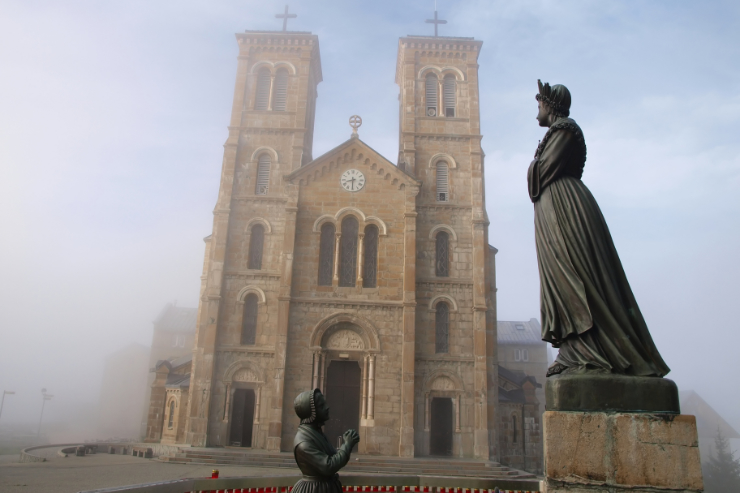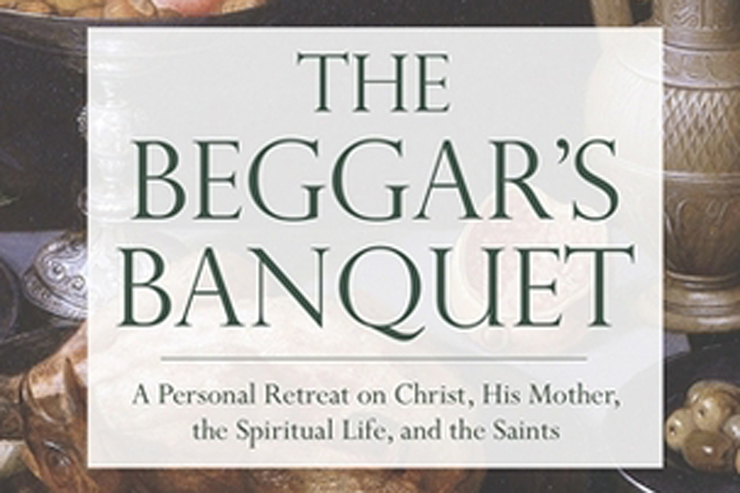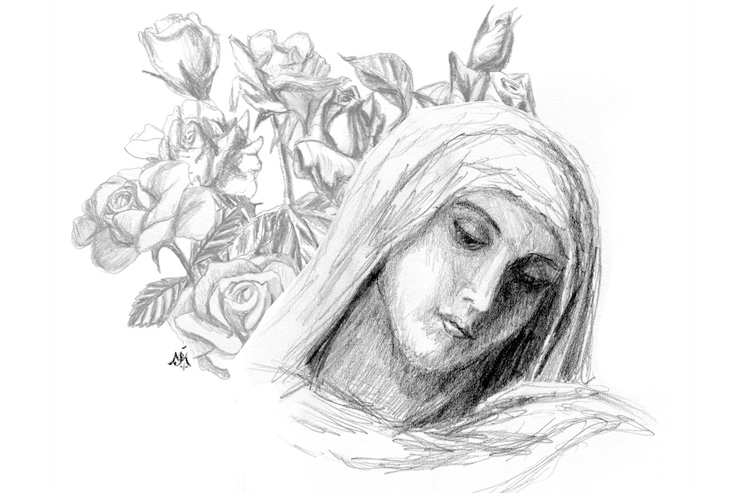In the 1980s, when I was growing up in a small town in Ohio, there was a popular song that we all loved. It glorified life in a small town and made us feel that we were something special because we didn’t have all the conveniences of urbanity. We could forget that we had a forty-five-minute drive to “civilization” and all the fun entertainment of life in the city.
We used to play that song, my dad and I, and later my friends and I, over and over, and the melody of it got into my bones. I still live in a small town, though it’s a different small town. I’ll be probably raise my children in this small town, and when I think of that song, I smile. I could make it my anthem.
Life is pretty predictable in small towns, and the news spreads fast. If someone dies, the church committee knows before the funeral home. If a neighbor finds out they have cancer, the phone prayer chain goes into full gear by sundown. When there are family battles and babies born, there’s a support crew lined up before the reality sets in at home.
When the Blessed Mother appeared to Mélanie Calvat and Maximin Giraud—two uneducated peasant children—in 1846, the word spread quickly.
It was about 3:00 on September 19, the feast of Our Lady of Sorrows, in the mountain meadow in the parish of La Salette, France. Mélanie, age fifteen, and Maximin, eleven, were watching their cow-herds together. They had only become acquainted the day before, and Mélanie wasn’t the social type, by her own account. She had warmed to Maximin the day before, and after a small lunch, the two of them began to play “Paradise,” a game of Mélanie’s invention. It involved gathering stones together and decorating the resulting “house” with many flowers of all different colors.
They arranged an area so that their so-called living space would be the ground floor, and a large rock above would be the actual “Paradise” (heaven). They strung garlands of flowers all around it and worked themselves all the way to sleepiness so that, a few feet from their house, they curled up on the grass and took a nap.
They woke up, and Mélanie noticed that the cows had wandered off. She couldn’t see them, so they both climbed up on the hill beside their “Paradise” to find them. While they were there, a bright light—“shining more brightly than the sun,” Mélanie wrote later—caught their attention, drawing them to it. It was coming from a beautiful lady who was on top of their “Paradise,” dressed in a white cloak with a yellow apron, with a crown and shoes decorated with many-colored roses. She wore a crucifix around her neck, with a hammer and pliers on each end of the cross-bar. Her beauty was compelling to the two shepherds, as were the tears streaming down her face.
The children hesitated, and the lady invited them to come closer, speaking at first in French. Mélanie and Maximin were illiterate peasant children, and though they spoke French, they were much more comfortable in a local dialect. Soon after telling them “I am here to tell you great news,” the lady switched to this dialect.
The lady’s tears were a result of her Son’s anger. He was angry about people’s swearing, specifically using God’s name in vain; their working on Sundays and violating the day of rest; and the widespread disobedience of God’s laws. She told the children that she could not hold off her Son’s hand much longer, and that repentance in the form of confession, prayer, and penance were the only things that could stop his anger from taking action.
By now, Mélanie and Maximin knew that it was Mary, Jesus’ own mother, speaking with them. She gave each of the children a secret of their own, which the other could not hear, with instructions as to when and how they could be shared. Before disappearing, Mary asked the children to spread her message. They returned home and told their incredible tale, and it was put in writing the next day.
It didn’t take long for the word to spread. La Salette was, after all, a small town, and this was a miraculous apparition. The Church officials were very cautious, and, in some cases, downright cantankerous, opposing devotion to this vision of Mary and questioning it from every angle.
In July of 1847, not quite a year later, the detailed investigation began, including eight conferences of questioning and debate. Though it seemed inevitable that the apparition was true—twelve of sixteen voted in unquestionable favor of its truth—the opposition, especially within the Church in France, was remarkable. There is still some lingering controversy, though in July, 1851, the apparition was officially approved, under the title Our Lady of La Salette, in a pastoral letter by the diocesan bishop.
Mélanie was told by Mary that she could make her secret public beginning in 1858. During the investigative process, in 1851, both Mélanie and Maximin wrote their secrets and sent them to Pope Pius IX, where they remain in the Vatican secret archives. Mélanie released an extended version of her secret in 1858, which was sent by courier to Pope Pius IX and is lost; it was reproduced in 1860 and distributed.
It is in this, from what I have found, that the controversy lies. Over the years, the text of her secret changed a bit, had some extra details, seemed to be embellished. I can’t help but wonder if Mélanie, as she got older and as the message she received soaked in, didn’t start to understand it a bit more. I thought about incredible experiences in my own life—such as the pregnancy and birth of a child—and how I can look back and see so much more than what I saw at the time.
In the later and longer versions of the secret, it’s clear that the secret is not exactly the same as it was when it was sent to Pius IX in 1851, but it’s also obvious that the later editions logically elaborate the shortened, abstract statements initially made. In the opinion of wise and prudent observers, there’s a distinction between the two Mélanies, the innocent and simple girl of 1846 and the visionary of 1879, influenced by reading apocalyptic books and lives of illuminati.
Maximin’s secret was never published widely, though in 1866, he wrote a rebuttal of allegations against the La Salette apparition. He and Mélanie sent copies of their secrets to the Vatican during the investigations, and the focus was on Mélanie’s secret. Maximin’s secret was shorter and less terrifying than Mélanie’s secret. Though hers was published and expounded over the years, Mary predicted in each version that a number of apocalyptic things would occur.
Regarding society, Mary predicted the harvest would fail completely, and in December 1846, the majority of the popular crops were diseased, and, in 1847, Europe experienced a famine that resulted in the death of around one million people, including one hundred thousand in France. During this time, cholera became widespread throughout France and many children died. She also predicted the collapse of the Second French Republic with the Franco-Prussian War (1870-1871) and the communist uprising with the Paris Commune (1871).
Mary also prophesied that the Catholic faith in France and the world would dwindle greatly, both within the civilian population and throughout the clerical hierarchy, because of many sinful acts. She told the children that an attempt would be made on the Pope’s life, though he would survive, and that he was not to trust Napoleon.
Mary’s language was prophetic, and that, together with the painful truths she revealed and the pending punishment, inspired many people to conversion. The miracles at La Salette started when Mélanie and Maximin were taken back to the site of the apparition during interrogations from the local authorities. A man in the group broke off a piece of the rock the Virgin Mary had been on, and revealed a spring. Twenty-three cures were later accredited to that spring in the first year after the apparition. Since then, hundreds of additional miraculous cures have been reported.
In all the drama of controversy, it’s easy to overlook a simple component that Our Lady of La Salette reminds all of us, and that she admonished the two children: we should be in prayer morning and night. This is easier said than done in our hustle and bustle society.
If time is a problem, the Virgin Mary continued, at least say an Our Father and a Hail Mary. Perhaps she knew that women like myself, bearing the burden of busy, would roll our eyes at the idea of continual prayer.
“When will I get my work done?” I imagine myself asking her.
“Just say an Our Father and a Hail Mary, dear,” she replies through the La Salette apparition.
Though it’s currently home to only two hundred people, La Salette remains a pilgrimage destination. Our Lady of La Salette appeared to a couple of small town nobodies, and she fanned the flame of controversy with the difficult message she brought. At the heart of it, though, was a call to conversion.
Mary leads us, always, to Jesus, and in this instance she was no different. At La Salette, France, Mary called all of us back to the fold from our sins, back to the arms of God, back to the glory of heaven. We can choose not to go, because free will remains ours to use. At La Salette, Mary also tells us, just as any loving mother would, of the consequences we’ll face.
















